Rain falls on the sand dunes as five horse riders set out across the Osoyoos desert.
The weather is unusual for this time of year. Last year, temperatures in B.C.’s Interior hit 45 degrees in June. Charred tree stumps and the skeletons of animals still litter the ground — testament to the forest fire that followed.
But this year the land is lush and green. Perfect forage for wandering cows.
“Rattlesnake,” says Elijah Swan-Hall who, at 15, is the youngest. He peers into the bush and listens for the tsk tsk tsk. His grandfather was bitten by one a few years ago, he says. He survived but the finger on his right hand is still crooked at the joint. “He’s a tough guy,” Swan-Hall says, lighting a cigarette.
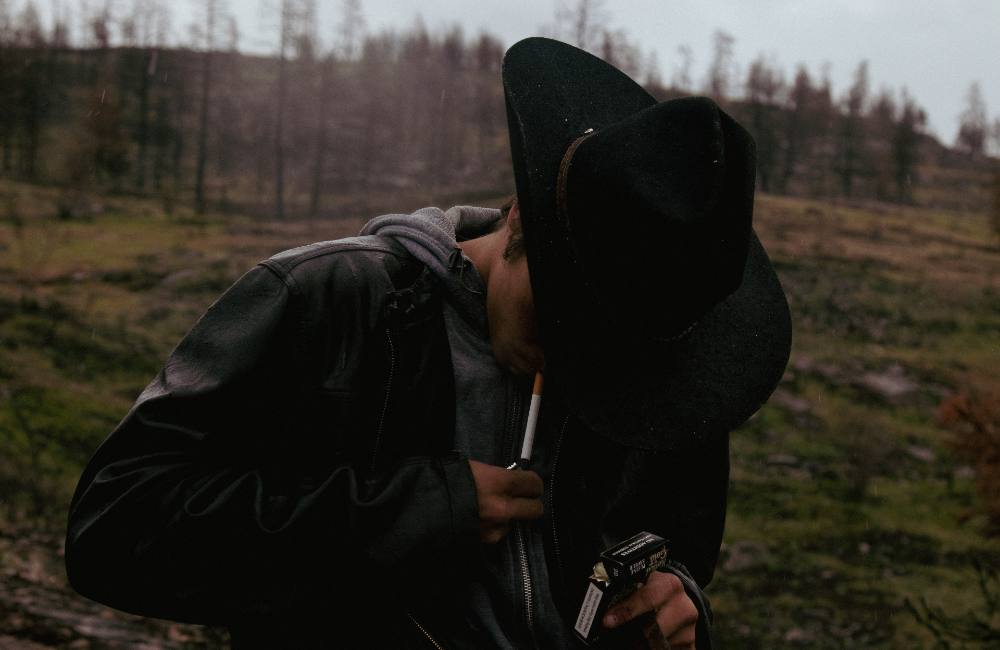
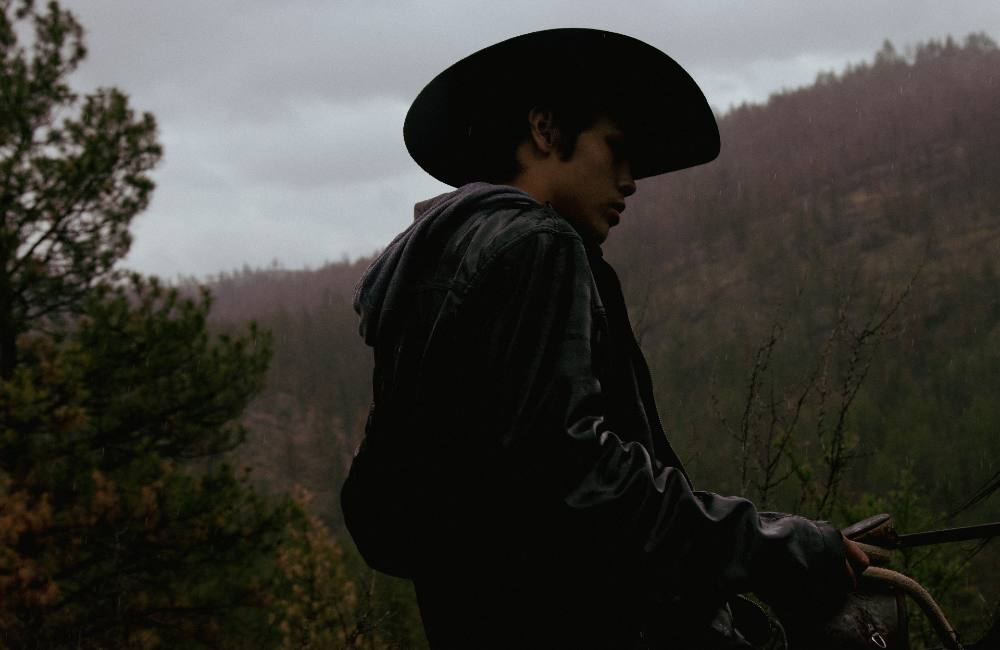
The Stelkia family cattle drive always begins this way. On the first day, riders search the desert for cows scattered across the Osoyoos Indian Reserve, which abuts the U.S. border an hour and a half south of Kelowna.
On the second day, the cows will be corralled together at Spetlumkum ranch, owned by the Stelkia family, who are Syilx — but who prefer to be referred to as Indian.
“It is part of our heritage,” Aaron Stelkia, the chief cattle rancher of the Stelkia family, told me a few months ago while I was interviewing him for another story. “We don’t want that word to be forgotten.”
On the third day, the cattle will be pushed around 12 kilometres southwest up the mountain, where lush green grass will sustain them over the summer and fall until the frost and snow forces them back down into the valley in the winter.
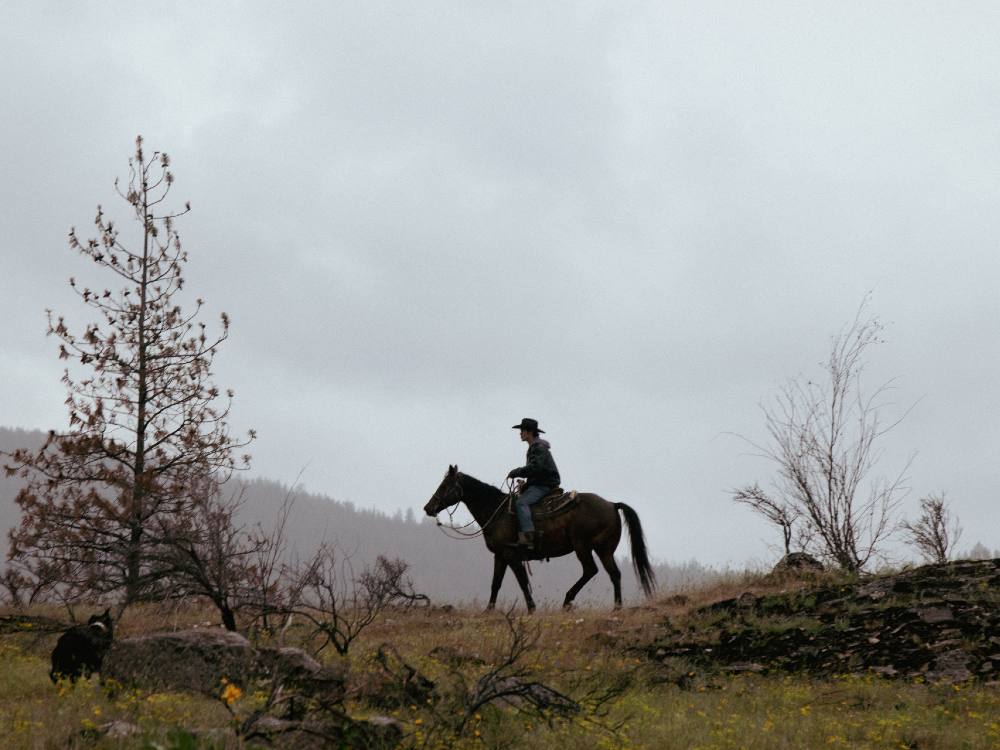
The riders pass by a graveyard. The Osoyoos Indian Band flag flutters in the wind above rows of tombstones. Swan-Hall knows many of the people in this cemetery. Aunts, uncles and cousins.
A stone's throw across the road from the cemetery is the charred remains of a church burnt down one year ago, barely a month after 215 unmarked graves were found at the site of the Kamloops Indian Residential School.
The cattle drive is not just a practical necessity for the Stelkias.
It is also a pilgrimage across residential school land done in memory of all the children lost. In particular, for Shaun Stelkia, who drowned in Wood Lake, a two-hour drive north of here. He died eight years ago at the age of 29.
But in the middle of the desert, mounted on a horse, it feels like Shaun’s still around. “The drive means family,” Swan-Hall says. “We may no longer be physically connected to each other. But out there, on the land, we're spiritually and mentally connected.”
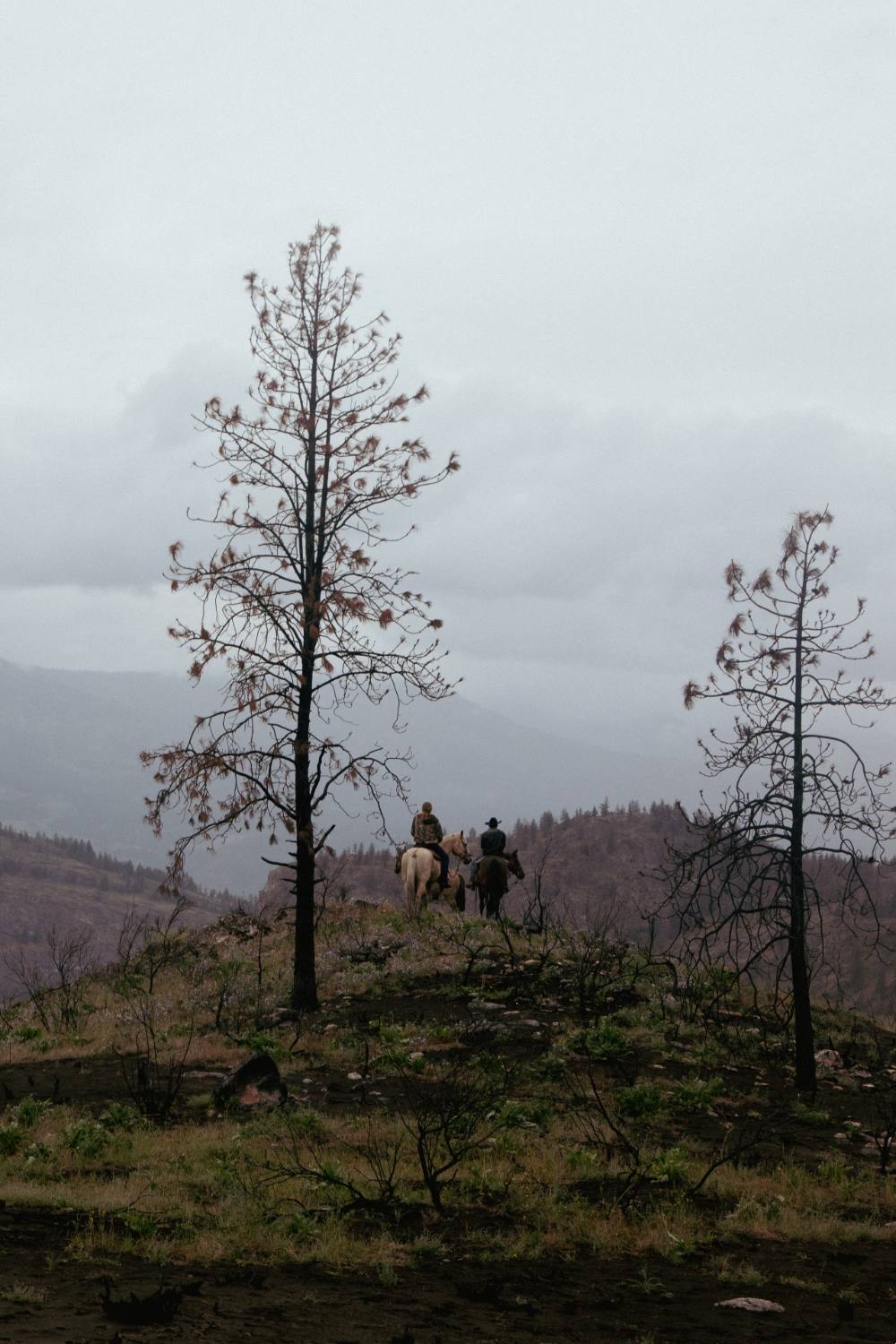
After four hours of riding, the riders find the cows in a steep ravine, hidden alongside a creek and knee deep in mud. There are around 60, calves included. They must now be pushed up the hill and onto the flats where they will be corralled in a pasture, ready for day two.
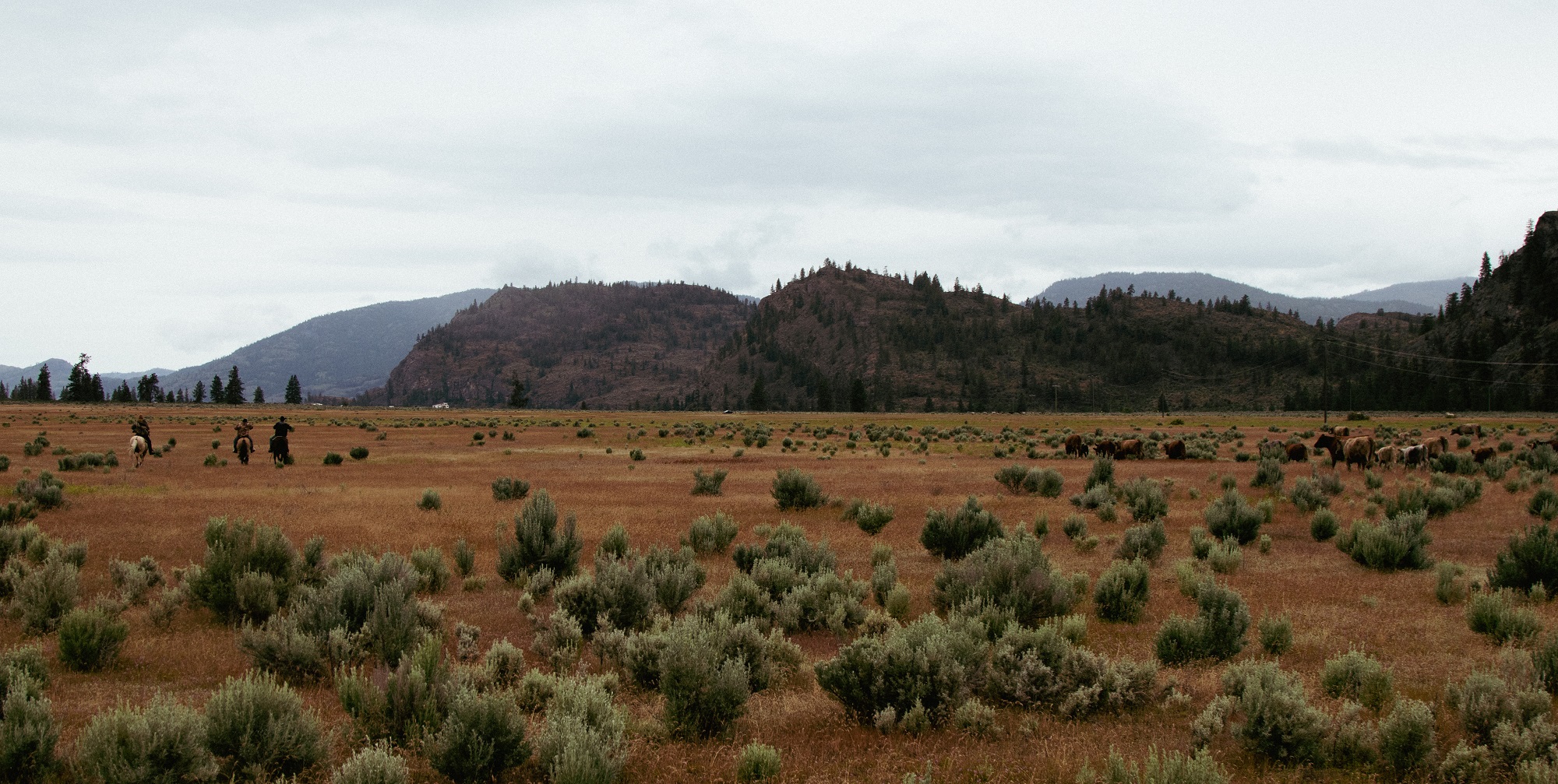
The rain has stopped and the clouds start to dissipate as the second day of the cattle drive begins. Riders sink back into their saddles, the soft flesh of their thighs rubbed raw from hours of riding yesterday.
Today, the cows must be pushed five kilometres to another ranch where the remainder wait, ready to be charged into the mountains.
It won’t be a quick five kilometres. The cows are slow, and sometimes ornery. Some riders will push from the back, while others will cover the flanks, their presence forcing cows to stay in line.
“Pushing cows is like playing pool,” says Jessi Wyatt, who was galloping race horses at five years old. “You’re the cue ball and you’ve gotta apply just the right amount of pressure at just the right angle if you wanna get it to go the right place.”
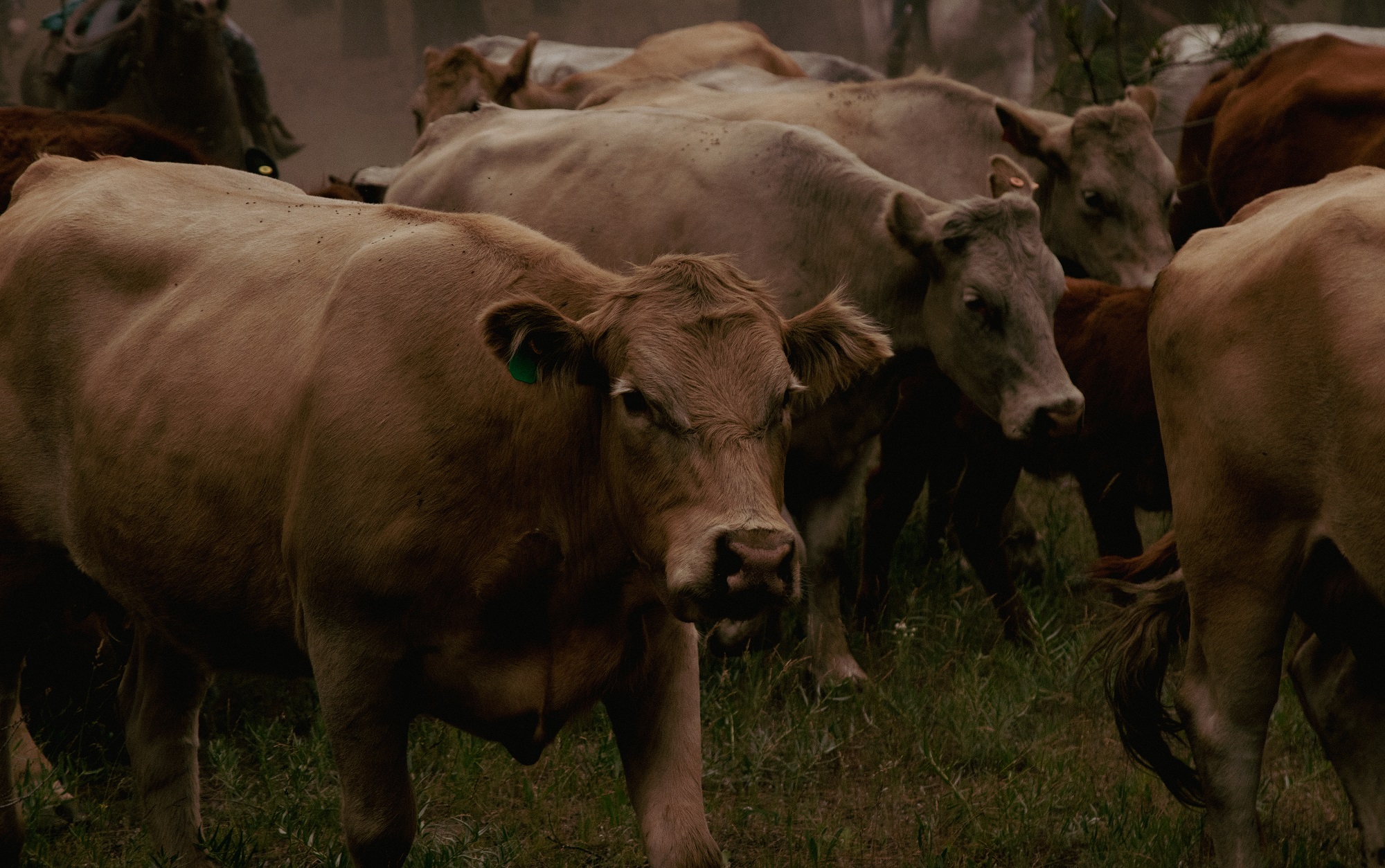
Wyatt grew up on a ranch. She spent 15 years working at feedlots, racing horses between stalls feeding cattle. But these days she takes tourists on trail rides, where she teaches inexperienced riders to stay in the saddle. And she also trains wild horses.
“Like my grandfather said, the key to staying in the saddle is simple,” she jokes. “Shoulders like a lady, hips like a… belly dancer.”
Wyatt does the job Shaun Stelkia used to do. And her son is named after him.
“It’s a lifestyle for me,” she says. “But we also do this in memory of Shaun and other family members that were cowboys and great men. We do it as a cowboy tradition.”
She kicks her horse and races to “pressure” a cow that wandered away from the pack.
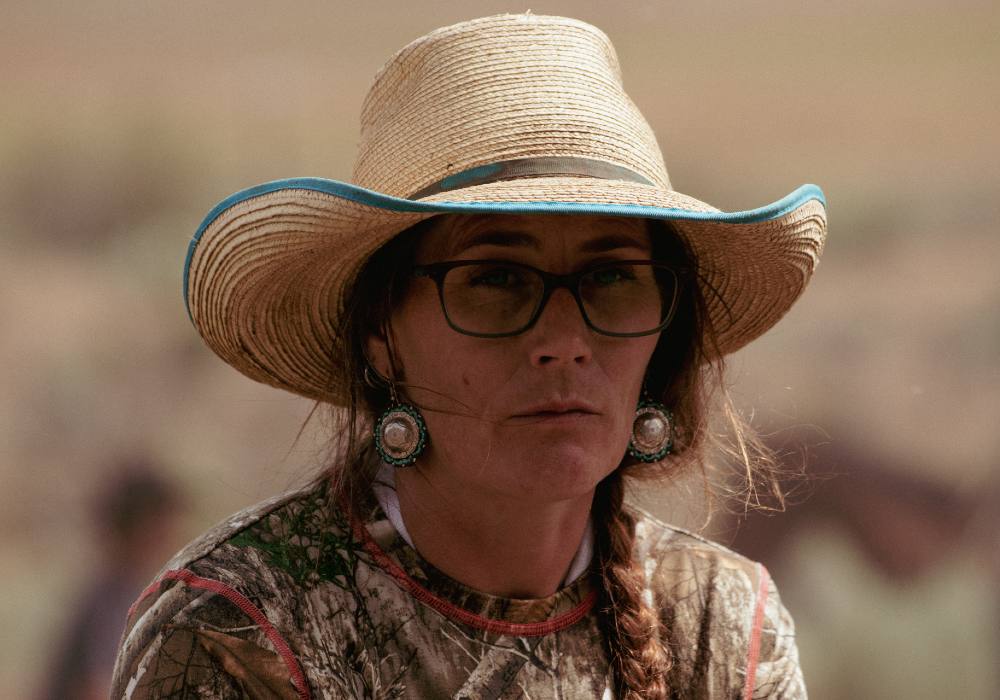
“The horse is the only way to drive cattle,” Wyatt says. “It’s about feel. With a horse you can read and feel the pressure you are putting on the cows. With a quad or ATV it's harder to read and you end up pushing too hard.”
Horses can also navigate the rocky bushes and narrow ravines better than anything motored or human-made.
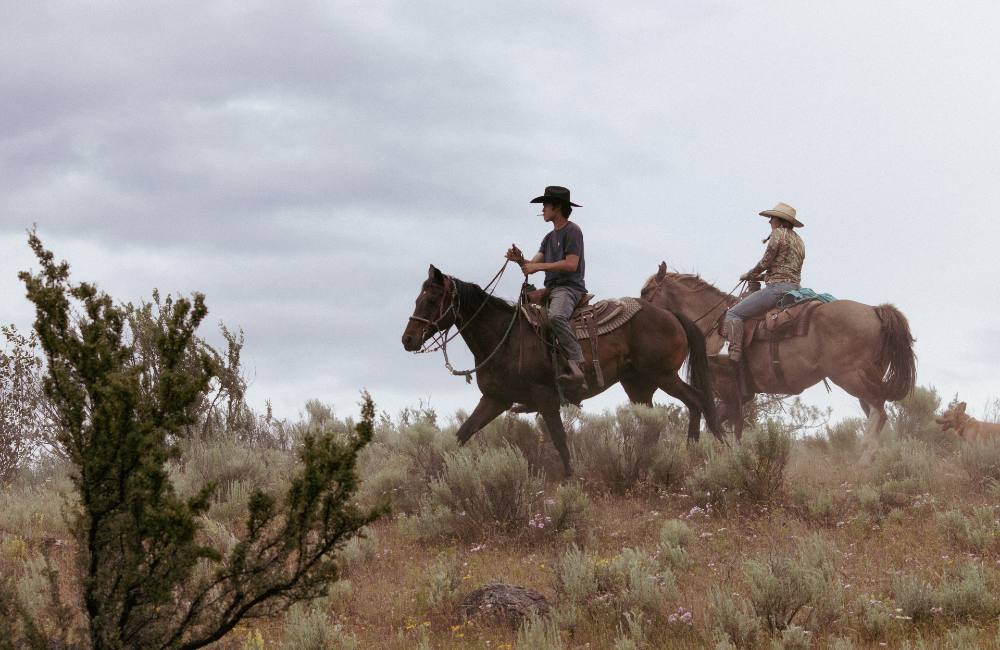
The drive passes by Area 27 Motorsports Park, an exclusive membership-based luxury motorsports club. Its track winds across the land like a lounging snake. The vrooom of race cars chokes out the sound of the cowboys and braying cattle.
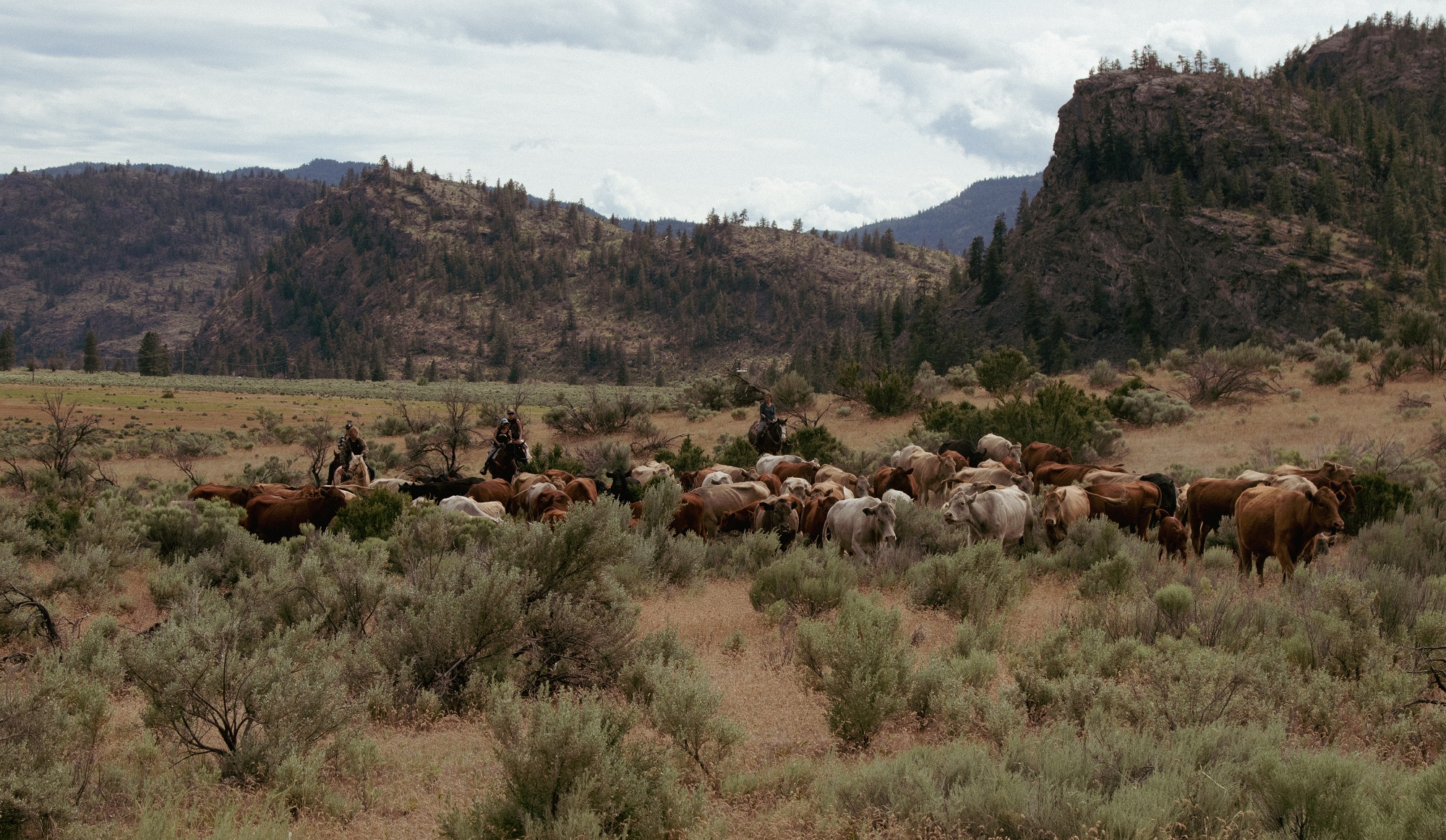
Day three begins with heat. There are no clouds in the sky, and the temperature hits 30 degrees by 9:30 a.m.
The riders are shedding layers, and the cows stand around a large pasture, basking in the sun and eating grass. Pushing them up the mountain in this heat will be difficult.
The procession, now 150 cattle strong, starts up a road. Cattle excrement lines the concrete, splattered across the yellow lines.
Flies fill the nostrils of horses and their heads knock up and down, straining at the reins. Riders swat them off their arms and foreheads.
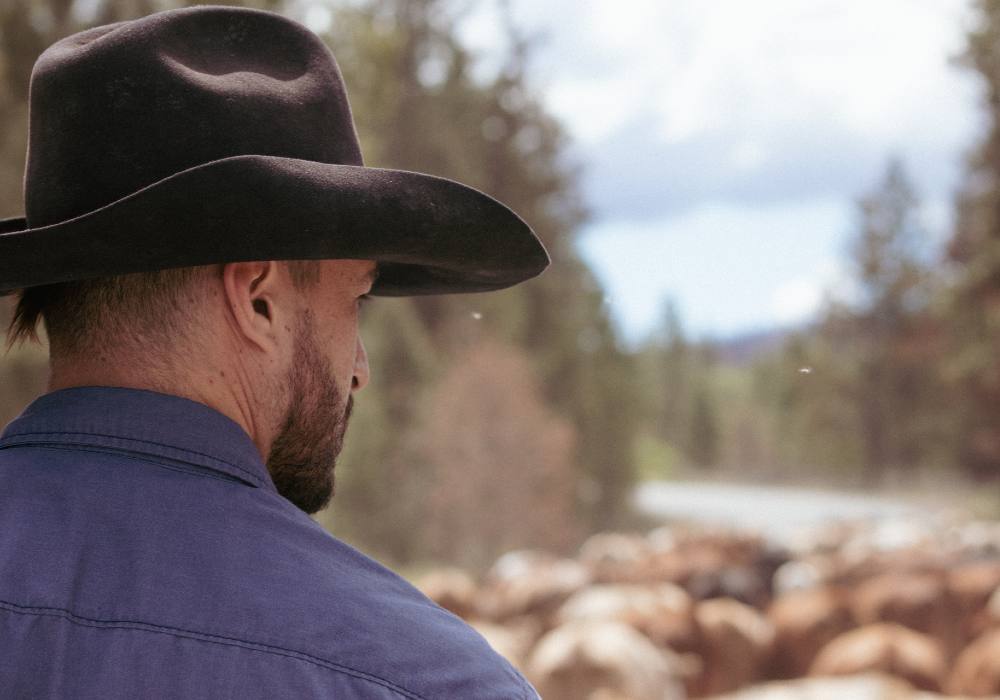
It’s Brianna Stelkia’s 17th birthday, but she says she doesn’t feel any older. Instead, she’s frustrated because her horse is being disobedient.
Shaun was Brianna’s cousin. He was also her friend. They used to lie on the floor and eat ice cream together while watching Mantracker. They also spent hours at the stables, where Shaun told Brianna all about the horses. She was too young to remember their names, but she’ll never forget the day they carved “Shaun and Brianna” into clay rock, his steady hand guiding her words.
Shaun died when Brianna was nine. She goes quiet when people talk about him. He’s not the only friend she’s lost. She also lost her cousin Leon. They used to haul horses together late into the night.
“I do this to honour Shaun and Leon,” she says. “I need them to know I’m keeping the tradition going.”
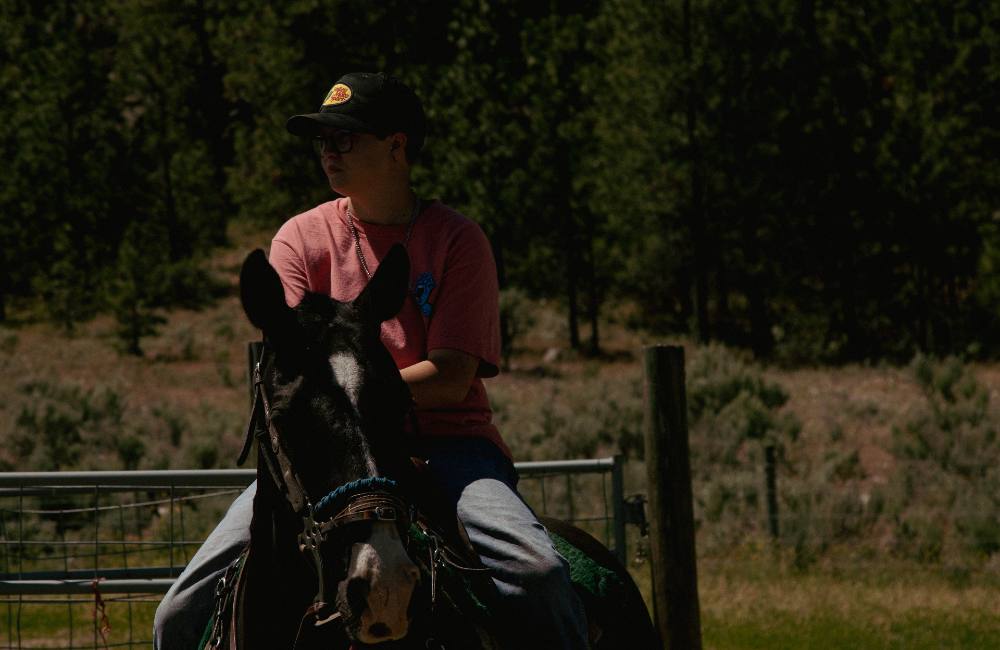
“Car!” calls Brianna Stelkia as a shiny Toyota mini SUV pulls up behind the herd. The cowboys scatter to the flanks and the vehicle slowly pulls its way through the mass of cattle.
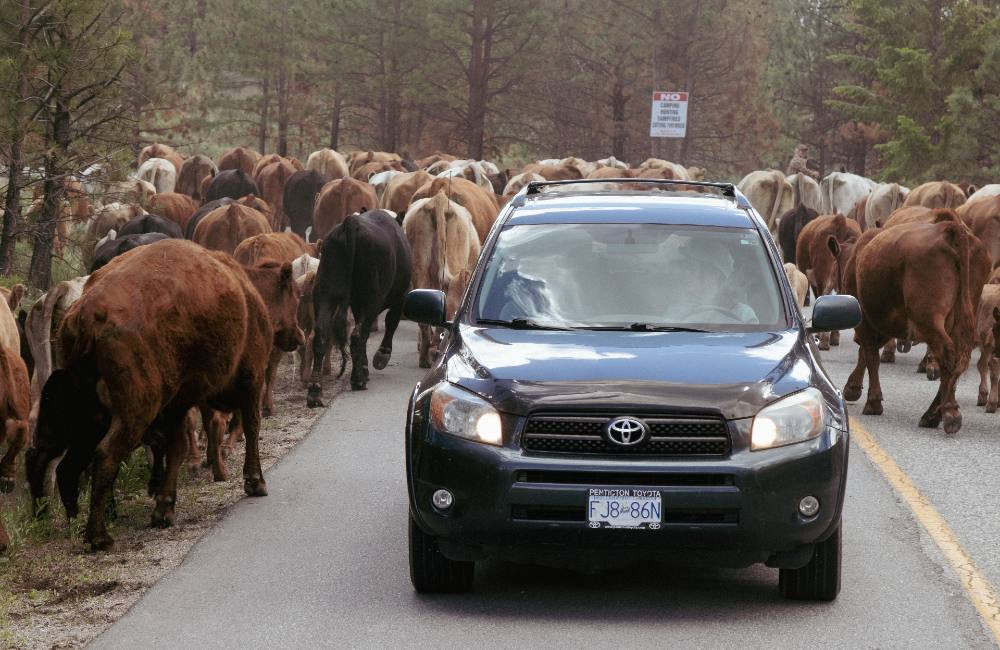
The cattle don’t want to climb uphill. Instead, they keep veering off the road. At one point they travel 500 metres in the wrong direction. Turning them around will be impossible — cows won’t go backwards.
The only option is to push them into the bush, across a creek and back onto the road. Tensions run high.
“C’mon cows. Get moooving,” Brianna Stelkia’s voice cracks, exasperated, as she wades through the undergrowth on horseback, the thin branches of the trees pulling and snapping across her neck, forehead and arms, leaving behind red marks and scratches.
At last the cows return to the highway. Stelkia watches them, exhausted.
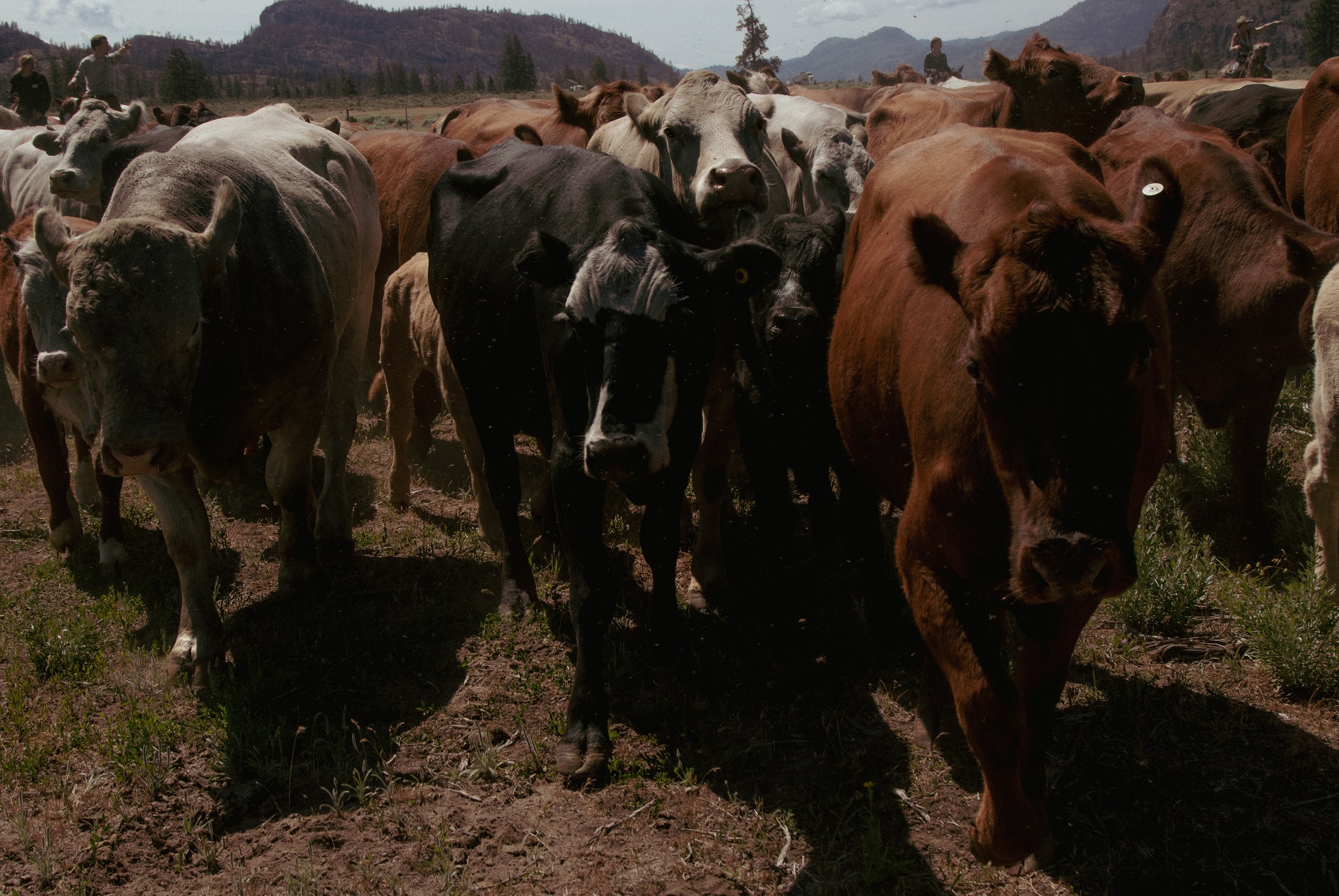
At times the cows escape down sandy steep banks where the horses are too tired or scared to go. Riders climb out of the saddle and slide down the banks on foot.
Eventually, clouds start to gather in the sky and the temperature drops. The woods grow thicker. There’s the sound of a gushing creek in the distance.
At a seemingly random fork in the forest service road riders hear the word: The drive is finished.
The cows have found their greener pastures.
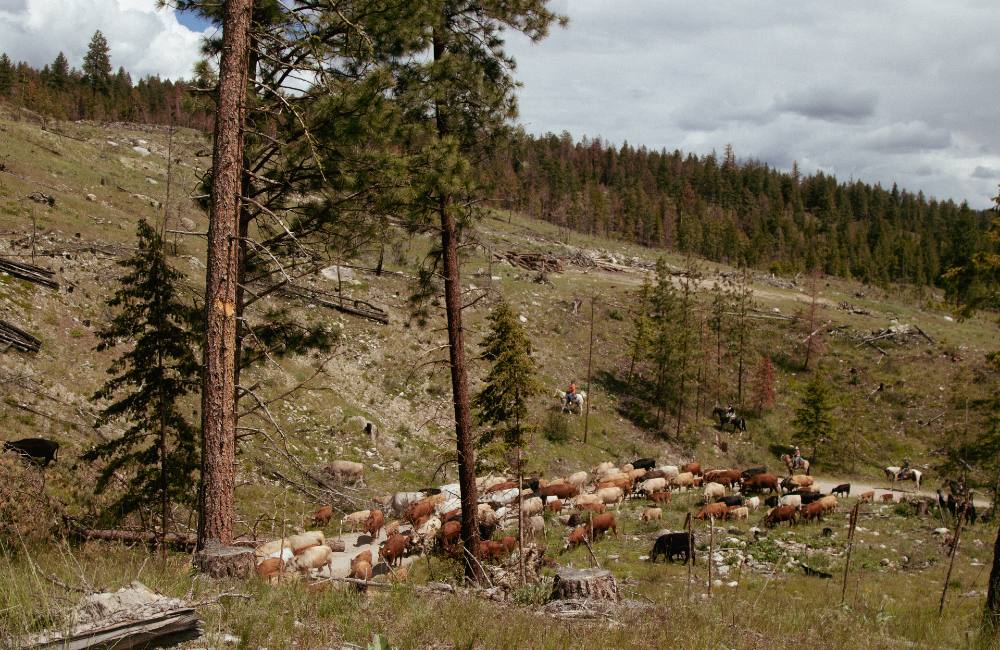
The riders extricate themselves from their saddles and load the horses into trailers attached to trucks. They slump onto the bed of the pickups, take off their hats and wipe the sweat from their foreheads. They light cigarettes as the truck reverses down the road.
The cows eat grass, drink water and watch as the riders pull away. ![]()
Read more: Indigenous, Photo Essays, Environment


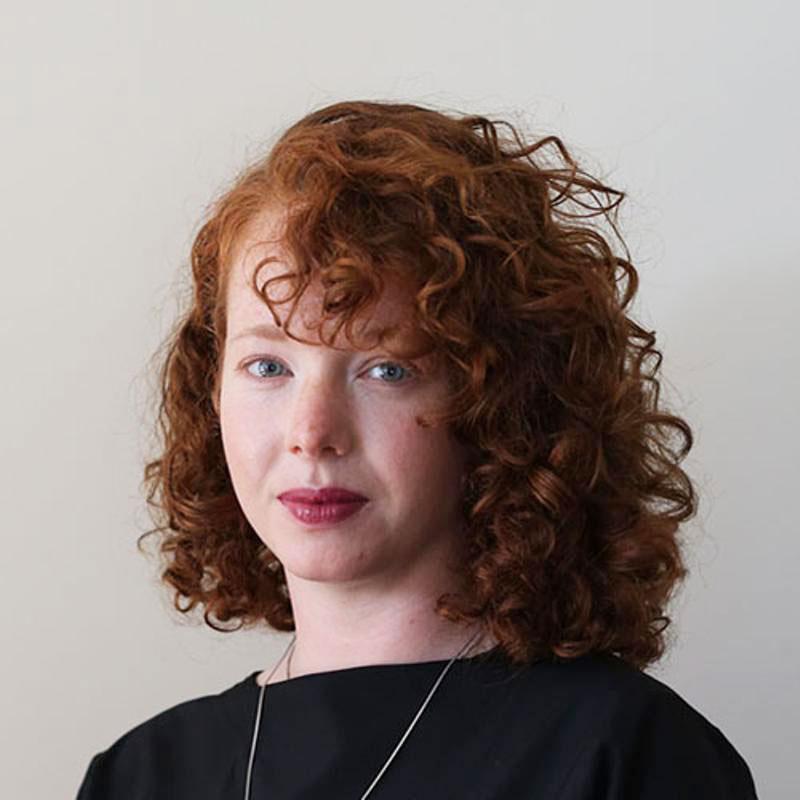

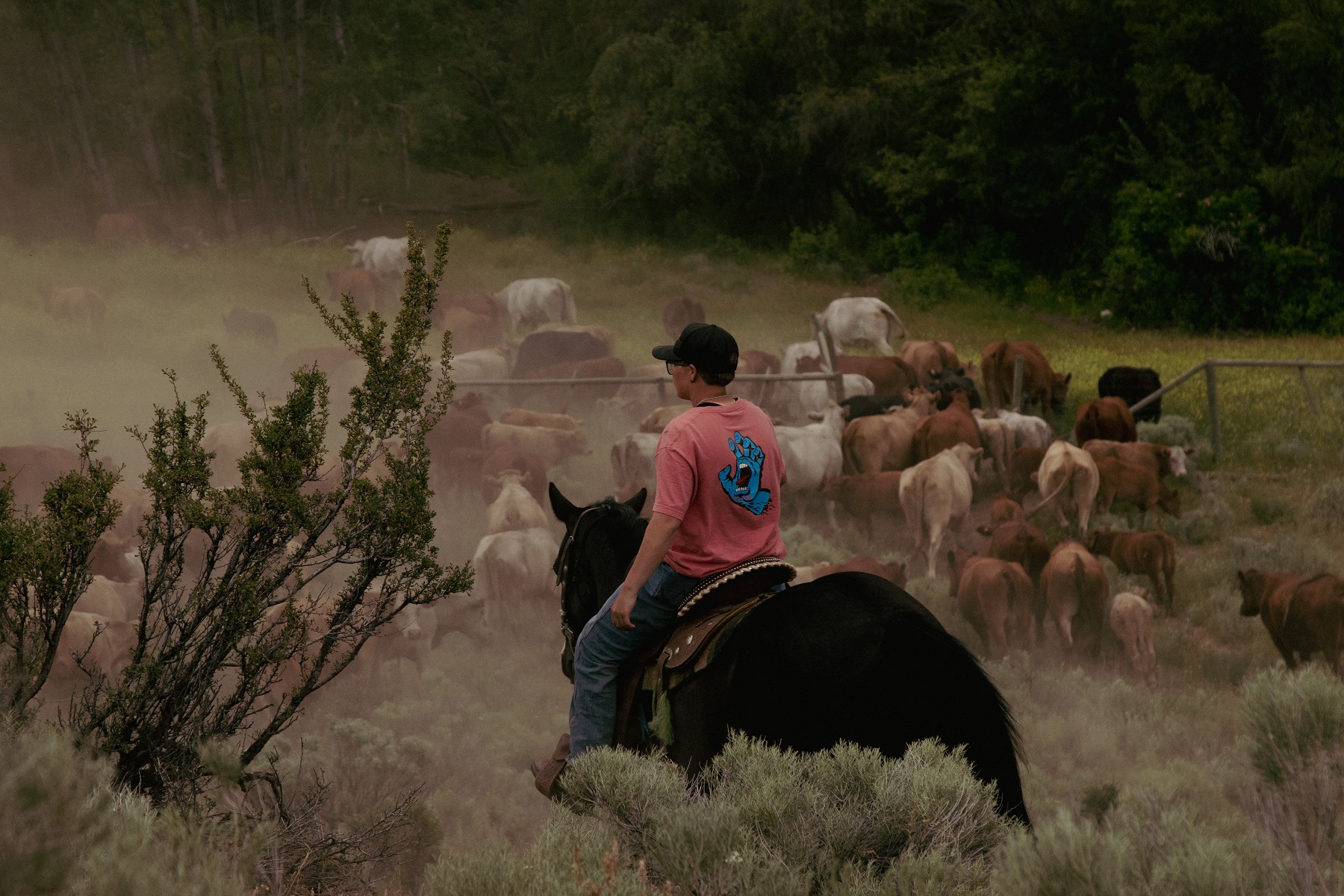












Tyee Commenting Guidelines
Comments that violate guidelines risk being deleted, and violations may result in a temporary or permanent user ban. Maintain the spirit of good conversation to stay in the discussion.
*Please note The Tyee is not a forum for spreading misinformation about COVID-19, denying its existence or minimizing its risk to public health.
Do:
Do not: